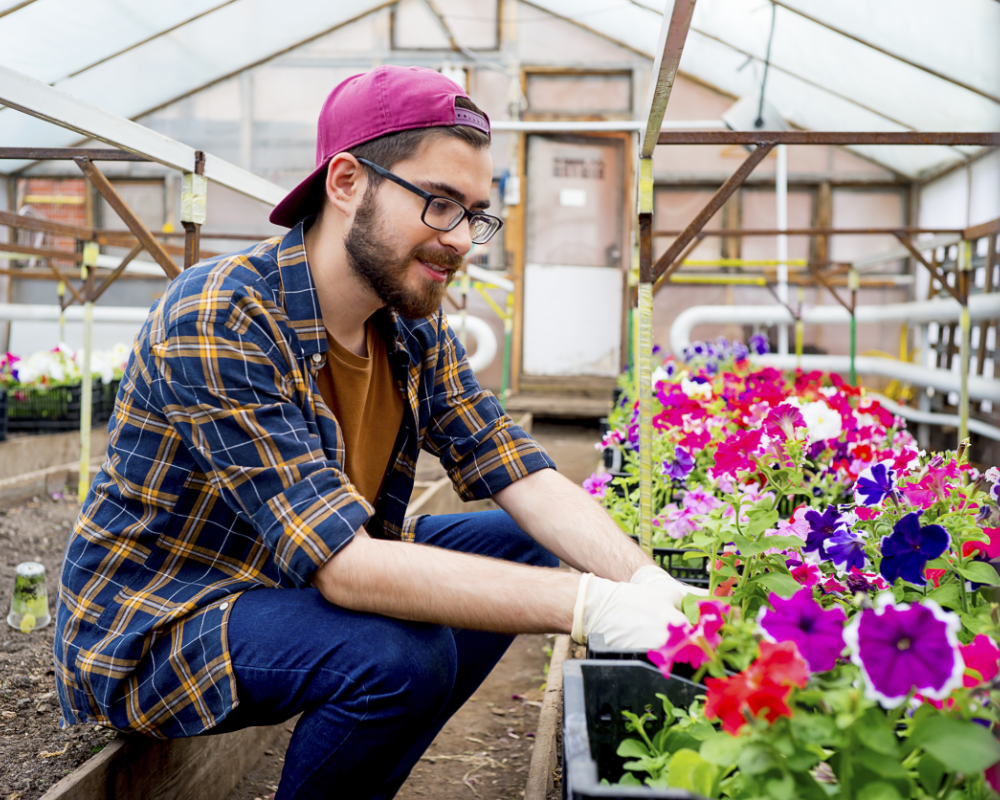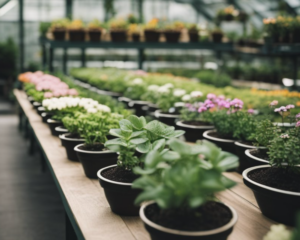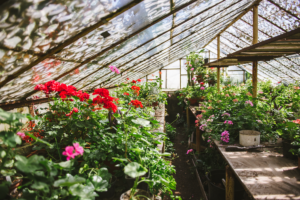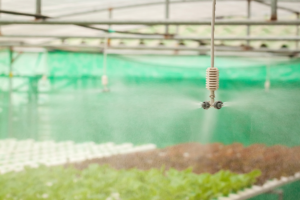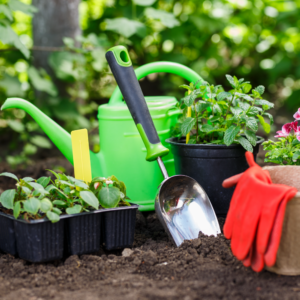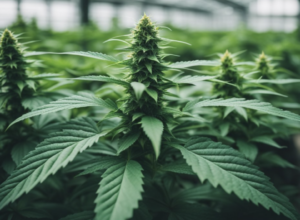Maintaining a greenhouse can seem like a daunting task, but it’s all about keeping on top of the little things to ensure your plants have the perfect environment to thrive. For me, it starts with regular checks and balances. It’s about making sure the structural integrity of the greenhouse is sound, that there are no cracks in the glass or tears in the plastic that could let in pests or cold drafts. Just like any home, a greenhouse needs a solid foundation and a tight seal.
Temperature control is crucial too. I keep an eye on the thermometer to make sure it’s not getting too hot or cold for my plants. Ventilation is another key factor; you can’t let humidity build up too much, or you’ll be dealing with mold and mildew. It’s a balancing act, managing the airflow and keeping the climate steady. And let’s not forget about watering—too much or too little can spell disaster for tender seedlings.
Cleaning is also on my regular to-do list. It’s not just about appearances; a clean greenhouse minimizes the risk of disease and pests. I take time to remove any plant debris, disinfect where necessary, and tidy up the workspace. That way, I can spot any issues before they become big problems. Trust me, a little bit of upkeep goes a long way in keeping your greenhouse garden healthy and productive.
Structural Integrity
Maintaining the structural integrity of a greenhouse is crucial for its longevity and the protection of the plants inside. I always focus on the base and frame, the glazing material, and the operable components like doors and vents to ensure everything’s in top shape.
Inspecting the Frame and Base
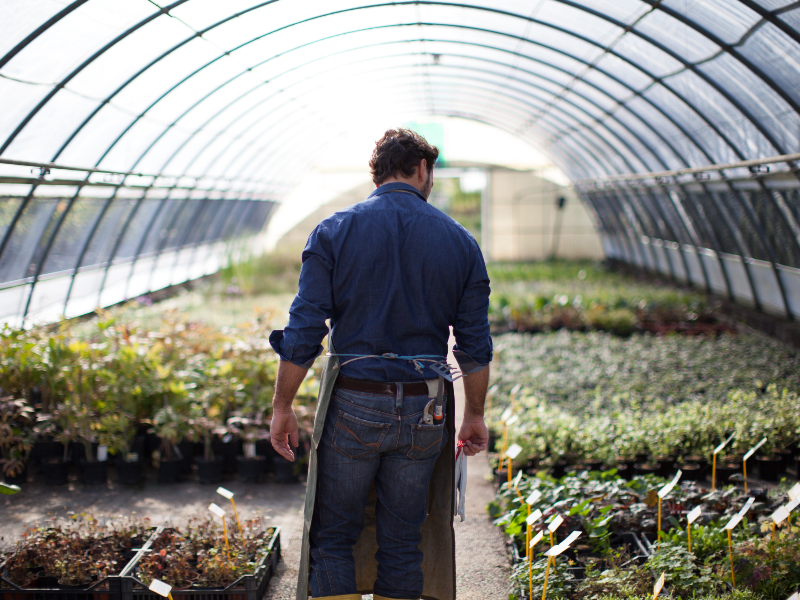
First up, I check the frame and base of my greenhouse regularly. An aluminum frame requires less attention, but I’m vigilant for any signs of corrosion or loose bolts. For wooden frames, I look for signs of rot or insect damage. Any loose joints need tightening, and it’s vital to keep wooden parts sealed and protected.
- Signs of Damage: Look for cracks, warping, or detachment.
- Common Materials: Aluminum (less maintenance), Wood (requires more upkeep).
- Maintenance Tips: Tighten loose bolts, apply caulk to seal gaps, treat wood.
Checking for Glass or Polycarbonate Damage
Next is the glass or polycarbonate. These materials can make or break a greenhouse, literally. I examine each pane or sheet for cracks or holes that can compromise insulation. Small scratches are usually no big deal, but I’ll replace or repair any serious damage.
- Glass: Check for chips, cracks, and breakage.
- Polycarbonate: Look for discoloration, scratches, and brittleness.
- Repairs: Small polycarbonate holes can be patched; glass generally needs to be replaced.
Maintaining Greenhouse Doors and Vents
Lastly, I make sure the doors and vents are working smoothly. They’re the moving parts of the structure and subject to wear and tear. I check the hinges and seals to keep them airtight and prevent heat loss. If I spot any damage, prompt repair is my go-to rule to avoid future issues.
- Door Maintenance: Lubricate hinges, tighten hardware.
- Vent Care: Clear obstructions, inspect for structural damage.
- Sealing: Replace worn seals to maintain temperature control and reduce drafts.
Environmental Control Systems
To keep plants thriving, I focus on three key systems in my greenhouse: air circulation, climate control, and moisture management. Each plays a crucial role in maintaining an ideal growing environment.
Ventilation and Air Flow
I use ventilation systems to maintain fresh air flow, which is vital for plant health and pest control. My setup includes:
- Fans: Positioned strategically to ensure even air distribution.
- Ventilation openings: Well-placed to allow natural air exchange without creating drafts.
Heating and Cooling Management
The heating and cooling management is crucial for maintaining optimal temperature. My approach includes:
- Heating system: A balance of overhead and under-bench heaters to keep the temperature consistent.LocationHeater TypeFunctionOverheadForced Air HeatersHeat DistributionUnder-benchRadiant Heat MatsRoot-level Warmth
- Cooling: I rely on a combination of shade cloths and evaporative coolers for summer months.
- Insulation: Ensuring good insulation helps me minimize the use of heaters and coolers.
Humidity and Irrigation Tactics
I maintain ideal humidity levels and efficient irrigation with:
- Humidifiers: For increasing humidity during drier conditions.
- Dehumidifiers: To pull excess moisture from the air if it gets too high.
For watering:
- Watering system: Drip lines and misters deliver water efficiently, directly to the root zones of my plants.
Cleaning and Disinfection
Maintaining a clean greenhouse is essential to prevent the spread of diseases and keep pests at bay. I’ll share some top-notch tips on keeping your greenhouse in tip-top shape.
Regular Cleaning Routines
I make it a habit to regularly remove debris like fallen leaves and discarded plant material. Such waste can harbor invisible threats like mites and gnats, so I sweep them up and dispose of them properly. For daily cleaning, nothing beats some soapy water and a good brush. I like to use a mild detergent to wipe down surfaces; it does wonders in keeping algae and mold under control. Hot water can also be used to scrub off stubborn grime.
- Daily Tasks
- Sweep floors to remove debris.
- Wipe down surfaces with soapy water.
- Weekly Tasks
- Check for and remove any pests, like ladybugs or insects.
- Clean tools with a mild detergent.
Deep Clean Strategies
About twice a year, I dive into a deep clean, which involves taking everything out of my greenhouse. With everything out of the way, it’s easier to scrub all the nooks and crannies. I pay special attention to corners and joints where pests like to hide. Once the surfaces are scrubbed clean, I rinse everything down with hot water, ensuring no soap residue is left behind.
- Biannual Deep Clean Checklist
- Empty greenhouse completely.
- Scrub all surfaces thoroughly.
- Rinse with hot water to clear soap and debris.
Disinfectant and Pest Control
After cleaning, disinfecting is my next line of defense. I use commercial disinfectants designed for greenhouses to safeguard against a variety of diseases. For pest control, I sometimes employ natural predators like ladybugs to deal with aphids. It’s an effective strategy that minimizes the need for chemical pesticides. If I do spot signs of insects or mites, though, I don’t hesitate to bring out the big guns—eco-friendly pesticide sprays.
- Disinfectant and Pest Control Tactics
- Apply greenhouse-safe disinfectant post-cleaning.
- Introduce beneficial insects for natural pest control.
- Use eco-friendly pesticides as a last resort against persistent pests.
Internal Management of The Greenhouse
In managing the inside of my greenhouse, I focus diligently on soil, compost, and plant health while also optimizing the available space.
Soil and Compost Care
I think of my soil as the foundation for all my plants, so I keep it rich and fertile. Regular testing helps me track pH and nutrient levels. Here’s my routine in simple steps:
- Testing Soil: At least twice a year to adjust pH if necessary.
- Enhancing Soil: With homemade compost to boost nutrients.
- Rotating Crops: Prevents depleting soil and controls pests.
For compost, maintaining a proper balance of green and brown materials is key—I aim for a ratio of about 1:3. I ensure regular aeration of my compost to accelerate decomposition and prevent unpleasant odors.
Plant Cultivation and Support
Growing my crops involves more than just planting and watering. I apply a few strategies to encourage healthy growth:
- Pruning: I prune my plants to promote better air circulation and prevent disease.
- Supporting Plants: Installing stakes or cages for my tomatoes and climbing beans.
- Monitoring Growing Season: I match the vegetables and fruits to their optimal growing season to ensure they thrive.
By keeping an eye on individual plant needs, I can cater to their specific requirements with attention to light, water, and nutrient needs.
Optimizing Space and Layout
Maximizing space is a must in my greenhouse. Here’s a snapshot of my layout strategy:
- Vertical Gardening: I use shelves and hanging pots to grow upwards, saving valuable floor space.
- Rotating Benches: They let me change the layout easily as the seasons and my gardening goals change.
- Strategic Positioning: I place tables and benches to create ample walking paths, while ensuring each plant gets sufficient light.
Every pot, plant, and surface has its place, chosen to streamline my daily routine and ensure the best use of space.
Tools, Materials, and Equipment
When I talk about keeping a greenhouse in top condition, it boils down to having the right tools, materials, and equipment. These are essentials I can’t skimp on if I want my plants to thrive.
Tool Maintenance and Storage
I make it a habit to regularly check my tools for any signs of wear or damage. It’s key to keep them sharp and clean to prevent the spread of disease among my plants. After each use, I’ll clean them with soapy water and a brush, then dry them thoroughly to prevent rust. I’ve found that a little spritz of disinfectant doesn’t hurt either. For storage, I hang my tools or store them in a dry place. This simple routine keeps my tools in good nick and always ready for the next job. Check out this table showing an example of a maintenance schedule for cleaning your tools:
| Maintenance Task | Tool | Frequency |
|---|---|---|
| Clean | All tools | After use |
| Sharpen | Pruners, shears | As needed |
| Disinfect | Pruners, spades | Weekly |
| Inspect | All tools | Monthly |
| Store | All tools | After cleaning |
Selecting Suitable Materials
When I’m picking out materials for my greenhouse, I want to make sure they’re up to the task. For starters, I need pots and trays that are durable and promote good drainage. Then there’s the soil and compost, which need to be rich in nutrients and free from pests. I usually mix my own potting soil using compost, peat, and perlite to get the balance just right for my plants.
- Pots: Must have drainage holes; terracotta or plastic recommended.
- Compost: Well-rotted, pest-free, and full of nutrients.
- Soil: Light, well-draining, and nutrient-rich for potted plants.
Equipment Function and Safety
The equipment I use, like heaters, ventilation systems, and watering systems, are what make a greenhouse actually work. They control the environment, so my plants can grow year-round. It’s non-negotiable for me to follow the manufacturer’s instructions to the letter, and to carry out regular safety checks. It’s just common sense to ensure everything’s working properly and safely. Trust me, a malfunctioning heater in mid-winter is not a situation I want to find myself in.
- Heaters: Check connections and safety shut-offs.
- Ventilation Systems: Ensure vents are clear and motors work smoothly.
- Watering Systems: Look for leaks or blockages in the hoses and nozzles.
Seasonal Adjustments and Upkeep
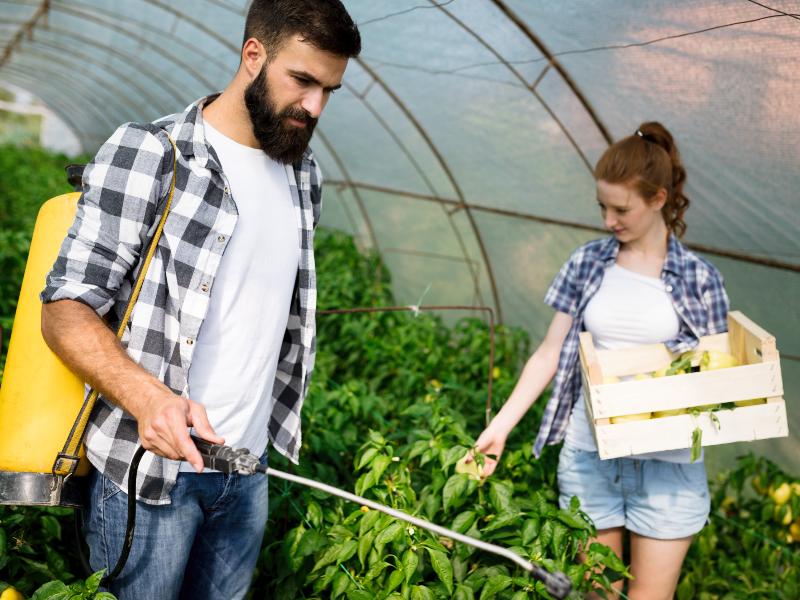
I find that staying on top of seasonal changes is crucial to maintaining a healthy greenhouse environment. Adapting my maintenance routine to meet the immediate needs of each season ensures that my plants thrive all year round.
Preparing for Seasonal Changes
As I transition between seasons, I make it a point to assess my greenhouse’s readiness. I typically follow a checklist:
- Spring & Summer:
- Replace or repair any shade cloths to protect against intense sun.
- Inspect for wear and tear on panels and structure.
- Remove weeds that thrive in warmer weather.
- Fall & Winter:
- Ensure heating systems are operational.
- Check for drafts or gaps that allow heat to escape.
- Ready frost protection measures for delicate plants.
Adjusting my setup for the growing season is key. In spring, I start seedlings and make sure the greenhouse is clear of pests that might have settled in during winter.
Monitoring and Adapting to Weather
I constantly keep an eye on the weather, as it dictates much of my daily upkeep. My routine monitoring includes:
- Temperature: Ensuring proper ventilation on hot days and adequate heating during cold nights.
- Humidity: Adjusting watering schedules as humidity can lead to mold or disease.
I adapt by installing or removing panels, regulating shading, and altering watering habits. Here’s a simplified version of my response strategy:
| Weather Condition | Adjustment |
|---|---|
| High Heat | Increase shading; use misting systems to cool down; ensure adequate ventilation. |
| Cold Snap | Check heating systems; seal gaps; apply thermal screens at night to retain heat. |
| Storms | Secure any loose elements of the greenhouse structure; check for immediate repairs post-storm. |
Draft and corrosion checks are habitual for me, especially following weather extremes. I replace corroded parts promptly to avoid further damage and costly repairs—proactive checks save me headaches later on.
Troubleshooting Common Issues
When I’m tending to my greenhouse, I always keep an eye out for a few common issues that can crop up, such as unwanted pests, structural damage, or environmental imbalances. It’s crucial to catch these early and act swiftly.
Handling Pests and Diseases
In my experience, pests like spider mites and fungus gnats can be a real nuisance. They love to feast on my plants, and if left unchecked, can cause widespread disease. Here’s what I do:
- Spider Mites: I check the underside of leaves for tiny, spider-like critters and fine webs. If I spot them, I use a mixture of water and mild soap to spray down the affected plants.
- Fungus Gnats: These little buggers thrive in wet soil. To combat them, I let the top layer of soil dry out before watering and use yellow sticky traps to catch adults.
Addressing Structural Concerns
My greenhouse structure needs to be solid, so I regularly inspect for any cracks or crevices that need sealing to avoid structural damage. I take special notice of:
- Cracks and Holes: I fill them in with a suitable sealant to keep my greenhouse well-insulated.
- Doors and Vents: I ensure they are properly sealed when closed to maintain the internal environment.
Managing Environmental Imbalances
Maintaining the right humidity and temperature regulation is vital for plant health. I’ve got a few tricks to keep everything balanced:
- Humidity: I use a hygrometer to monitor the levels and make adjustments by increasing ventilation or using a humidifier/dehumidifier as needed.
- Temperature: I regulate temperature with a combination of thermostats, shade cloths during the day, and insulation materials at night.
For proper drainage, I ensure that my beds are raised and that the water can run off without pooling, to prevent rot and other issues linked to excess moisture.
Enhancements and Innovations
I’m constantly scouting for new improvements in greenhouse maintenance. In my quest, I’ve found that the real game changers are adopting cutting-edge technologies and doubling down on sustainability. So let’s talk about what’s at the forefront of these areas.
Adopting New Technologies
In the realm of new technologies, I’ve incorporated advanced tools to automate climate control, making sure my plants thrive in an ideal environment. These tools come from sensors, which now provide real-time data to help me make informed decisions quickly. For example:
- Temperature Sensors: Keep the interior just right.
- Moisture Monitors: Ensure my plants aren’t thirsty or drowning.
And it’s not just about what’s happening inside. Technology has taken leaps to protect the structure of my greenhouse too, with Riga polycarbonate panels that defend against harsh weather while offering superb insulation. It’s like equipping my greenhouse with an unbreakable shield!
Improving Greenhouse Sustainability
Green technology is my best friend when it comes to boosting sustainability. I’ve invested in solar panels that cut my electricity bills and lessen my carbon footprint. Here’s a glimpse into some of the sustainable practices I’ve embraced:
- Rainwater Harvesting Systems: A smart way to water my plants.
- Organic Pest Control: Less chemicals, more nature.
I’ve also optimized my greenhouse’s structure, using durable, recycled materials wherever possible. This isn’t just good for the earth; it makes economic sense in the long run. Sustainability in greenhouse maintenance isn’t just a trend—it’s a responsibility I take seriously, and the advances in this field are a testament to what we can achieve when we think green.
Frequently Asked Questions
In this section, I’ll answer some common queries on keeping your greenhouse in top-notch condition.
1. What’s the best way to do a thorough clean-up of my greenhouse?
I find it effective to start by removing all plant debris and disinfecting pots and surfaces. I use a mild soap solution for the structure and a 10% bleach solution for cleaning tools and trays. It’s important to rinse everything thoroughly afterward.
2. Can you give me a rundown of daily, weekly, and seasonal greenhouse maintenance tasks?
Daily, I check for pest issues and water as needed, while weekly, I inspect plants for diseases and ensure ventilation systems are functioning. Seasonally, I deep clean, check the integrity of my greenhouse, and replace any damaged components.
3. Got any tips for DIY upkeep in my small home greenhouse?
Absolutely! Regularly clean your gutters and check for algae buildup. I create my own plant supports using bamboo and twine, and I monitor humidity levels closely, using a small fan or opening a window to adjust them.
4. What’s the most effective and natural method for cleaning greenhouse glass?
I vouch for using a mixture of white vinegar and water to clean the glass, as it breaks down grime without leaving streaks or harming the plants inside. Apply with a soft sponge or cloth and rinse with plain water.

